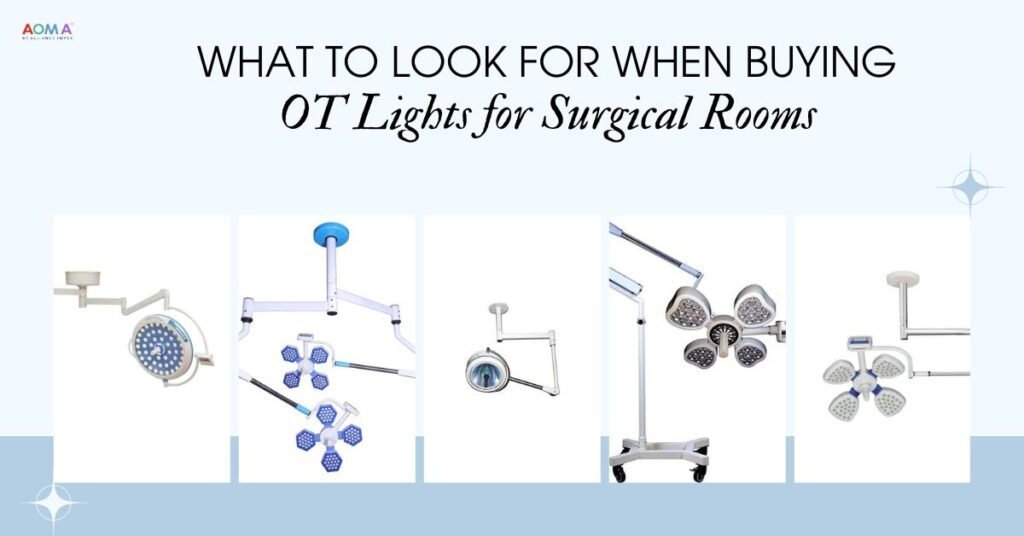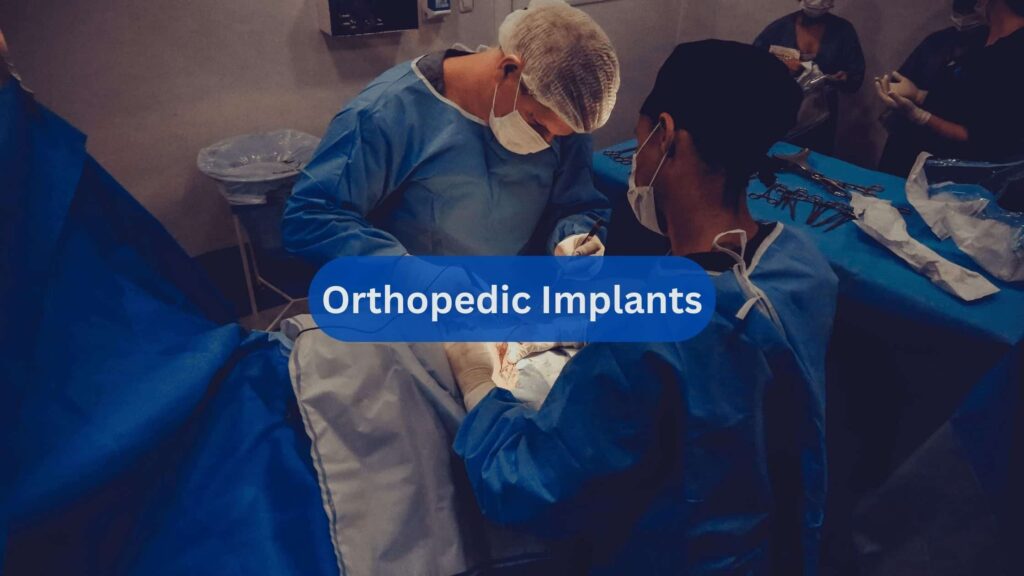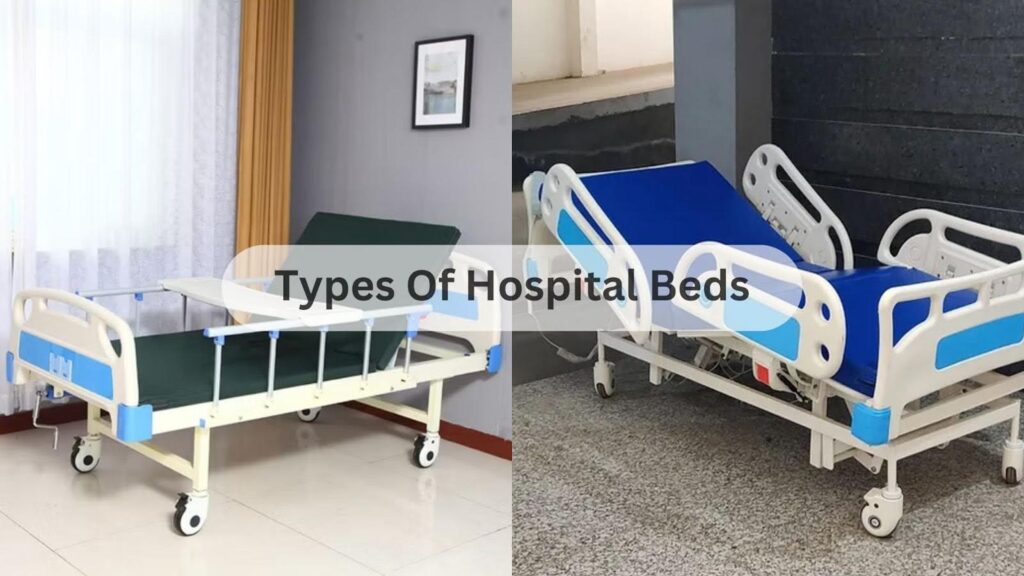In a surgical room, every detail matters, from the skill of the surgeons to the precision of the instruments. But one of the most overlooked yet crucial elements is Operating Theatre (OT) Lights. These lights play a vital role in providing surgeons with clear, shadow-free visibility during operations. Poor lighting can lead to errors, fatigue, and longer surgery times, while high-quality OT lights ensure safety and efficiency.
If you are setting up a new hospital, clinic, or upgrading your surgical unit, choosing the right OT lights should be at the top of your checklist. In this blog, we’ll guide you through everything you need to look for when Buying OT Lights for surgical rooms.
1. Brightness and Light Intensity
The most important factor in OT lights is brightness. Surgeries require intense illumination to allow surgeons to see even the smallest details. The brightness of OT lights is usually measured in lux.
- Minor procedures may need around 40,000–50,000 lux.
- Major surgeries may require up to 160,000 lux.
When choosing lights, always make sure they provide adjustable brightness, so doctors can set the right level depending on the procedure.
2. Shadow Reduction Technology
Shadows in the surgical area can obstruct visibility and create difficulties during operations. That’s why Modern OT lights are designed with multiple light sources and shadow management technology.
Look for lights that distribute beams evenly and minimize shadows even when the surgeon’s hands or instruments block part of the light. At AOMA Alliance, we provide OT lights designed with advanced shadow reduction to confirm uninterrupted visibility.
3. Color Rendering Index (CRI)
A good OT light doesn’t just brighten the area – it should also display colors accurately. The Color Rendering Index (CRI) measures how accurately a light source reveals the true color of tissues and organs.
- For surgical rooms, a CRI of 90 or above is ideal.
- High CRI ensures doctors can distinguish between subtle shades of red and yellow during surgeries, which is critical for decision-making.
4. Heat Management
Traditional OT lights often generated heat, making long surgeries uncomfortable for both patients and surgeons. Modern LED OT lights, however, provide high brightness without producing excessive heat.
When buying OT lights, always check for efficient heat management systems. This not only increases patient comfort but also prevents the lights from overheating and reduces energy consumption.
5. Adjustable Positioning and Flexibility
Every surgery is different, and surgeons often need to adjust lighting angles. That’s why OT lights should offer:
- Flexible arm movements
- 360-degree rotation
- Easy height adjustments
This ensures that the light beam can be directed precisely where it’s needed. At AOMA Alliance, our OT lights are designed for easy maneuverability, making them suitable for all types of surgical environments.
6. Single vs. Double Dome Lights
Depending on your hospital size and surgery type, you may need either Single-Dome OT Lights or Double-Dome OT Lights:
- Single Dome Lights – Suitable for minor surgeries and smaller clinics.
- Double Dome Lights – Provide better illumination and are ideal for complex, long-duration surgeries.
Always choose according to your surgical room requirements.
7. LED vs Halogen Lights
Most hospitals today prefer LED OT lights because they are energy-efficient, produce less heat, and last longer compared to halogen lights.
- LED Lights – Up to 50,000 hours of lifespan, less power consumption, better visibility.
- Halogen Lights – Lower upfront cost but higher maintenance and heat production.
For long-term investment, LED OT lights are the better choice.
8. Backup and Reliability
A sudden power failure during surgery can be life-threatening. That’s why OT lights must have uninterrupted backup options. Always choose lights that can run on UPS or hospital generators without delay.
At AOMA Alliance, our Operating Lights are built with reliability in mind, confirming they stay functional even in emergencies.
9. Ease of Cleaning and Maintenance
Hygiene is a non-negotiable factor in surgical rooms. OT lights should have a smooth, sealed design that is easy to clean and resistant to dust and contaminants. This prevents infections and ensures a sterile operating environment.
10. Cost and Warranty
Finally, consider the overall cost, not just the purchase price. Cheaper OT lights may save money initially, but often require frequent repairs and replacements. Instead, invest in durable lights that come with a solid warranty and after-sales service.
AOMA Alliance provides OT lights that combine durability, performance, and cost-effectiveness, making them a smart investment for hospitals and clinics.
Why Choosing the Right OT Lights Matters
The quality of your OT lights impacts more than just visibility. It influences:
- Patient safety – Better lighting reduces surgical risks.
- Surgeon efficiency – Less fatigue and more accuracy.
- Hospital reputation – A modern, well-lit OT builds patient trust.
- Long-term savings – Durable, energy-efficient lights reduce operational costs.
Final Thoughts
Buying OT lights is not just about picking any bright lamp, it’s about choosing a critical tool that supports life-saving surgeries. From brightness and shadow control to CRI, flexibility, and energy efficiency, every feature plays a role in creating the perfect surgical environment.
At AOMA Alliance, we understand the importance of high-quality OT lights for surgical rooms. Our range of LED OT Lights is designed to meet modern surgical needs with advanced technology, durability, and reliability.
If you are setting up a new clinic or upgrading your operation theatre, make sure to choose OT lights that enhance both safety and performance. After all, in a surgical room, the right light can make all the difference.
FAQs
Q1. What are OT lights, and why are they important in surgical rooms?
OT lights, also known as operating theatre lights, provide bright and shadow-free illumination during surgeries. They are important because they help surgeons see tissues clearly, reduce errors, and improve patient safety.
Q2. Which is better for hospitals – LED OT lights or halogen OT lights?
LED OT lights are considered better because they provide brighter illumination, last longer, consume less energy, and produce less heat compared to halogen lights.
Q3. How many lux is required for surgical OT lights?
For major surgeries, OT lights should provide up to 160,000 lux. For minor procedures, around 40,000–50,000 lux is sufficient.
Q4. What features should I check before buying OT lights?
Key features include adjustable brightness, shadow reduction, color rendering index (CRI above 90), flexible positioning, low heat output, and easy maintenance.
Q5. How long do LED OT lights last?
Good-quality LED OT lights can last up to 50,000 hours, making them a cost-effective and reliable choice for hospitals.




